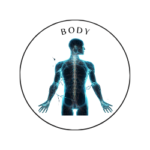 Mind
Mind
- Digital and Modern Well-being
- Mental Health and Emotional Well-being
- Mind-Body Connection and Holistic Health
- Parenting and Family
- Personal Growth and Development
- Relationships and Social Well-being
- Stress and Relaxation
- Therapeutic and Creative Practices
- Trauma and Recovery
- Work, Productivity, and Discipline
 Body
Body
 Fitness
Fitness
 Food
Food
 Beauty
Beauty
Understanding Body Mechanics to Improve Form

Move Better, Avoid Injury
Ever wonder why some people lift weights effortlessly while others struggle with joint pain? Or why runners with perfect posture seem to move more efficiently? The secret lies in body mechanics—the way your muscles, bones, and joints work together to produce movement.
Understanding proper body mechanics helps you exercise more effectively, avoid injuries, and maximize performance. Whether you’re lifting weights, running, or simply standing at your desk, good movement mechanics make all the difference.
What Are Body Mechanics?
Body mechanics refer to how your body moves and functions during daily activities and exercise. This includes:
✔ Posture – The alignment of your spine and joints.
✔ Muscle Engagement – How your muscles activate during movement.
✔ Balance & Stability – Your ability to maintain control during movement.
✔ Range of Motion – How freely and efficiently your joints move.
💡 Why It Matters: Poor body mechanics can lead to pain, stiffness, and injuries, while proper mechanics help prevent strain and improve efficiency.
The Basics of Good Body Mechanics
Mastering movement starts with a few fundamental principles:
🔹 Maintain Neutral Spine Alignment – Avoid excessive rounding or arching of the back.
🔹 Engage Your Core – Strong core muscles support your spine and reduce strain.
🔹 Move Through Full Range of Motion – Don’t cut movements short; work through proper joint mobility.
🔹 Distribute Weight Evenly – Avoid putting too much pressure on one side of the body.
🔹 Use Controlled, Smooth Movements – Avoid jerky or rushed motions that can cause strain.
💡 Tip: Whether you’re squatting, running, or sitting at a desk, keeping your body aligned and engaged is key to long-term health.
How to Apply Body Mechanics to Exercise
Now, let’s break down how proper body mechanics apply to common exercises.
1. Squats: Improve Form & Prevent Knee Pain
✔ Common Mistakes:
🚫 Knees caving inward
🚫 Rounding the lower back
🚫 Lifting heels off the ground
✔ How to Fix It:
🔹 Stand with feet shoulder-width apart.
🔹 Engage your core and keep your chest up.
🔹 Lower your hips while keeping your knees in line with your toes.
🔹 Keep weight on your heels and avoid leaning forward.
💡 Tip: Imagine sitting back into a chair to keep proper squat depth and posture.
2. Deadlifts: Protect Your Lower Back
✔ Common Mistakes:
🚫 Rounding the spine
🚫 Lifting with the back instead of the legs
🚫 Letting the bar drift away from the body
✔ How to Fix It:
🔹 Keep feet hip-width apart, and grip the bar shoulder-width.
🔹 Engage your core and maintain a flat (neutral) back.
🔹 Hinge at the hips and lower the bar close to your shins.
🔹 Drive through the heels to lift, keeping the bar close to the body.
💡 Tip: Think “hips back, chest up” to maintain proper form.
3. Running: Improve Efficiency & Prevent Injury
✔ Common Mistakes:
🚫 Slouching or leaning too far forward
🚫 Overstriding (landing with foot too far ahead)
🚫 Tense shoulders and arms
✔ How to Fix It:
🔹 Keep your head up and chest open.
🔹 Land with your midfoot under your body, not ahead of it.
🔹 Keep arms relaxed and at a 90-degree angle.
🔹 Engage your core to support a strong, upright posture.
💡 Tip: If you feel knee pain, focus on landing softer and shortening your stride.
4. Push-Ups: Engage the Right Muscles
✔ Common Mistakes:
🚫 Sagging lower back
🚫 Flaring elbows too wide
🚫 Only lowering halfway down
✔ How to Fix It:
🔹 Start in a plank position, wrists under shoulders.
🔹 Keep your core engaged and spine neutral.
🔹 Lower until your chest almost touches the ground.
🔹 Press up without locking the elbows at the top.
💡 Tip: If regular push-ups are too hard, start with knee push-ups or an inclined variation.
5. Lifting Heavy Weights: Prevent Strain
✔ Common Mistakes:
🚫 Using momentum instead of muscle control
🚫 Overarching the lower back
🚫 Holding breath during lifts
✔ How to Fix It:
🔹 Brace your core before lifting.
🔹 Keep your spine neutral—don’t hyperextend or round.
🔹 Exhale during exertion (e.g., lifting a weight up).
🔹 Move slowly and with control, avoiding jerky motions.
💡 Tip: If you can’t lift a weight with proper form, it’s too heavy—reduce the weight before increasing strength.
How Poor Body Mechanics Lead to Injuries
🚫 Lower Back Pain – Often caused by poor posture or weak core muscles.
🚫 Knee Pain – Usually from misaligned squats, lunges, or running mechanics.
🚫 Shoulder Strain – Common in weightlifting due to poor positioning or lack of mobility.
🚫 Neck & Wrist Pain – Often from bad desk posture or improper form in push-ups and planks.
💡 Prevention Tip: If a movement feels uncomfortable or painful, stop and correct your form.
How to Improve Your Body Mechanics
✅ Strengthen Your Core – A strong core supports all movement and reduces back strain.
✅ Increase Mobility & Flexibility – Regular stretching and mobility work improve movement efficiency.
✅ Use Mirrors or Record Yourself – Checking your form helps spot mistakes and correct them.
✅ Work with a Coach or Trainer – If unsure, get professional guidance on form and mechanics.
✅ Start with Lighter Weights – Master the movement before adding resistance.
💡 Tip: Practicing good posture in daily life (sitting, standing, walking) carries over to better body mechanics in exercise.
Final Thoughts: Move Smarter, Perform Better
Understanding body mechanics isn’t just for athletes—it’s for anyone who wants to move efficiently and pain-free. Whether you’re lifting weights, running, or just going about daily tasks, proper movement reduces injury risk and enhances performance.
Start by focusing on one movement at a time—perfect your squat, fix your posture, or improve your running stride. Small adjustments lead to long-term improvements in strength, flexibility, and injury prevention.
So next time you exercise, pay attention to how your body moves—your future self will thank you!
